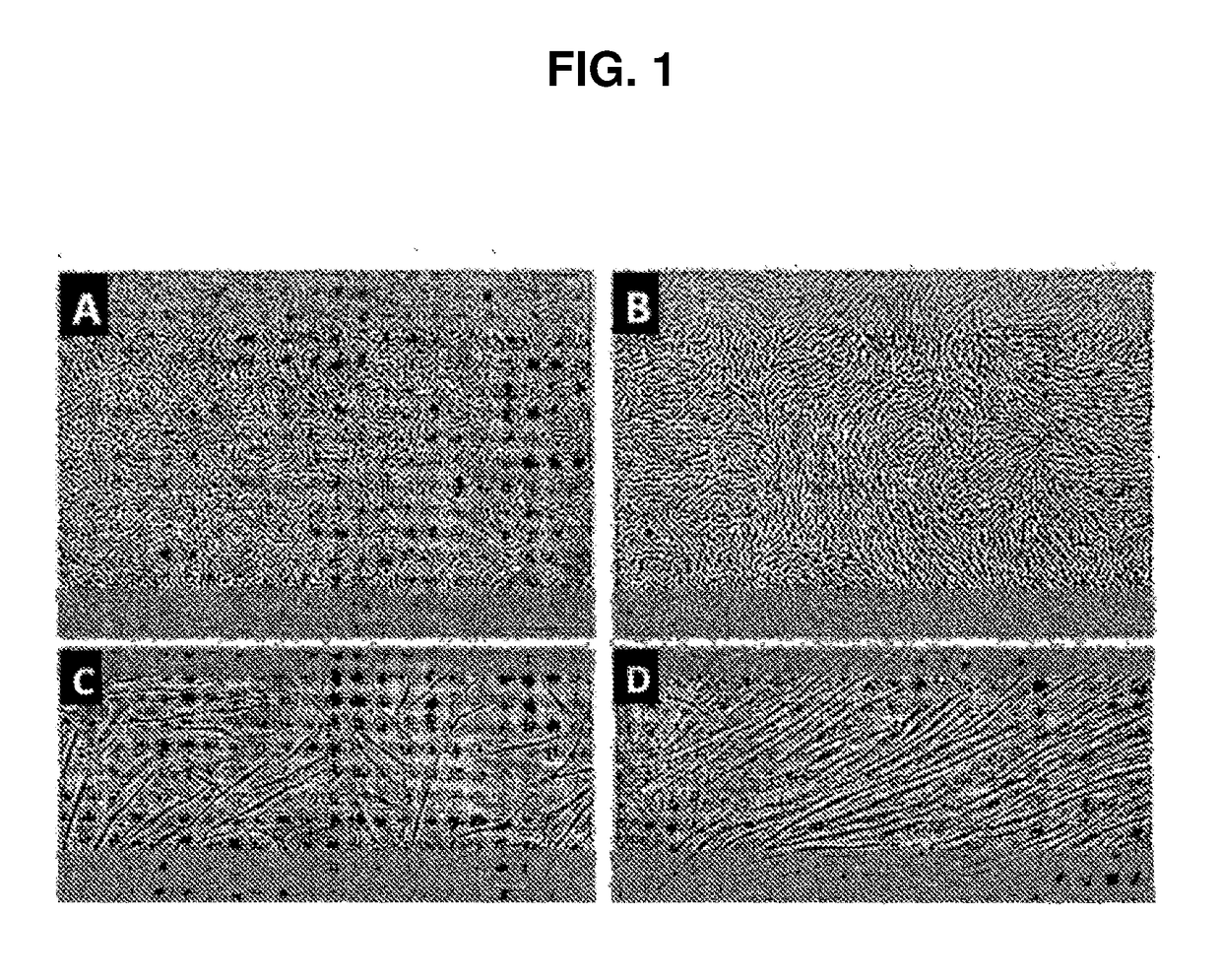Proliferative primary human sertoli cell cultures and their applications
a technology of sertoli cells and primary human sertoli, which is applied in the field of proliferative primary human sertoli cell cultures and their applications, can solve the problems of unavailability of primary human sertoli cells, immune rejection of allogeneic embryonic stem cells, and inability to protect porcine islets from neonatal porcine sertoli cells. to achieve the effect of expanding the population
- Summary
- Abstract
- Description
- Claims
- Application Information
AI Technical Summary
Benefits of technology
Problems solved by technology
Method used
Image
Examples
example 1
of Cells from Cadaveric Tissue and Characterization
Introduction
[0064]Cell cultures isolated from donor tissue were high purity Sertoli cells based on the biochemical markers that they expressed, like, follicle stimulating hormone receptor (FSHr) and GATA4, and ultrastructural studies that demonstrated the presence of smooth endoplasmic reticulum and perinucleolar spheres as described below. The data indicated that conditioned medium from these cultures had the ability to inhibit the proliferation of a human lymphocyte cell line, and demonstrate that the proliferative human Sertoli cells maintain their immune-privileged ability in culture. The cultured Sertoli cells proliferated in vitro under normal growth conditions (in the absence of any hormone treatment). The rate of proliferation (doubling approximately every 4 days) was not as robust as transformed cells. In addition, the cells demonstrated growth inhibition from compaction and cell-cell contact, characteristics of primary cel...
example 2
odification of Proliferative Primary Human Sertoli Cells
[0093]To determine if the cells could be genetically modified to express a protein of Interest for use in cell based gene delivery protocols, they were modified to express a reporter molecule, the green fluorescent protein (GFP). Cells were plated in 8-well tissue culture slides at approximately 20,000 cells / well. When about 80-90 percent confluent, the cells were infected with adenovirus vector expressing eGFP under cytomegalovirus promoter (Ad5eGFP). Adenovirus vector was obtained from ViraQuest (North Liberty, Iowa). There were two wells per condition that were (a) no virus, (b) 10 viral particles / cell, (c) 104 viral particles / cell (d) and 105 viral particles / cell. Cells were infected in the absence of serum and virus was left in for 4 hours. At the end of the incubation, virus containing medium was removed and fresh medium containing serum was added to the cells. This inhibits any further infection of the cells. Cells were ...
example 3
Human Blood-Testis Barrier
[0097]The specialized tight junctions (TJs) that occur in the testes between Sertoli cells create the polarity of the cells, restrict the movement of molecules between them, and separate the seminiferous epithelium into basal and adluminal compartments. Studies with rodent Sertoli cells have shown that formation of polarized monolayers can be achieved by growing the cells on or in extracellular matrix (ECM) on permeable supports such as transwell chambers (Hadley, Byers et al. 1985; Janecki and Steinberger 1986; Hadley, Djaklew et al. 1987; Anthony and Skinner 1989; Onoda, Suarez-Quian et al. 1990; Steinberger and Klinefelter 1993). Some of these monolayers were shown to have basally located tight junctions and to maintain germ cells (Yu, Sidhu et al. 2005). The formation of the barrier is assessed by its ability to stop the flow of media, the increase in transepithelial electrical resistance (TER), and polarized secretion of transferrin. This type of syste...
PUM
| Property | Measurement | Unit |
|---|---|---|
| time | aaaaa | aaaaa |
| volume | aaaaa | aaaaa |
| volume | aaaaa | aaaaa |
Abstract
Description
Claims
Application Information
 Login to View More
Login to View More - R&D
- Intellectual Property
- Life Sciences
- Materials
- Tech Scout
- Unparalleled Data Quality
- Higher Quality Content
- 60% Fewer Hallucinations
Browse by: Latest US Patents, China's latest patents, Technical Efficacy Thesaurus, Application Domain, Technology Topic, Popular Technical Reports.
© 2025 PatSnap. All rights reserved.Legal|Privacy policy|Modern Slavery Act Transparency Statement|Sitemap|About US| Contact US: help@patsnap.com



